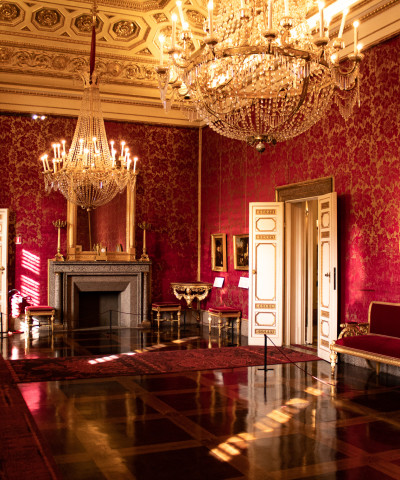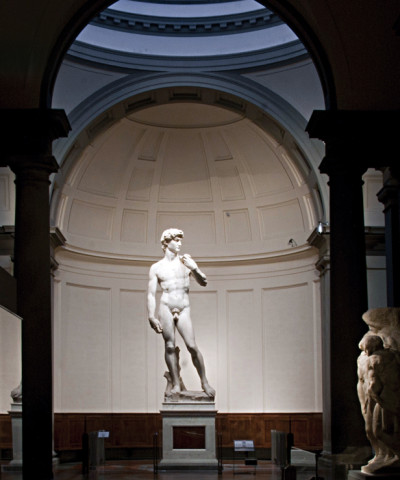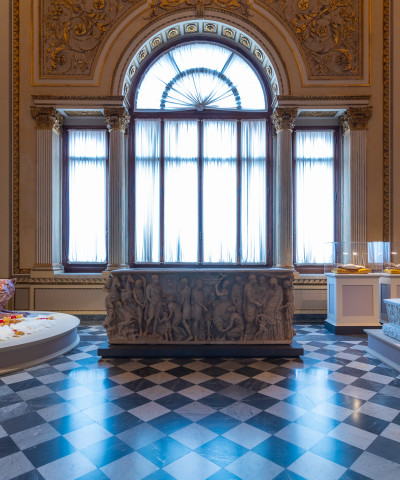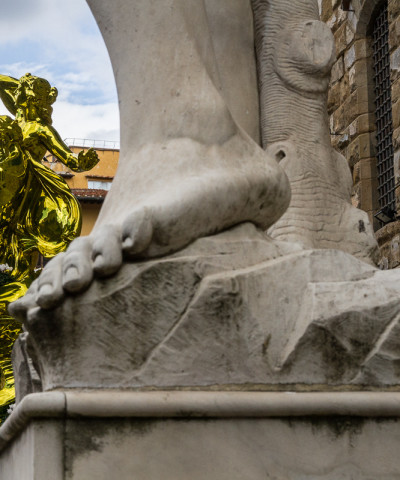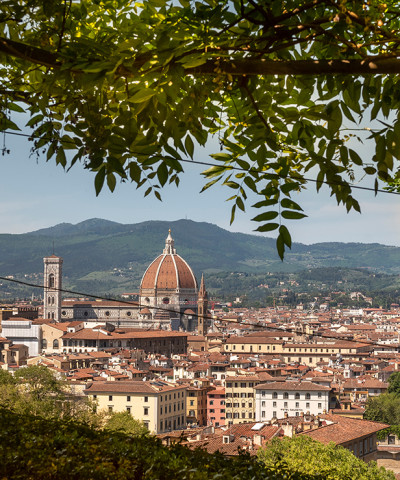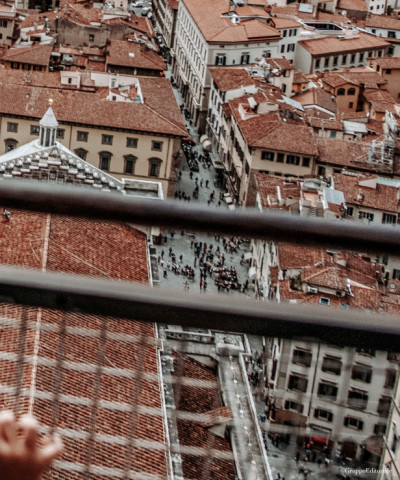Spiritual masterpieces in Florence
Greatest works of art in the florentine churches. Deeds and misdeeds…
Although even one lifetime is not enough to know Florence, a few hours are enough to get an idea of the extent of the city’s artistic and cultural heritage. Which is also the fruit of rivalry: in the city that was seen as the new Jerusalem, showing one’s riches by building churches and palazzos was not only a personal source of pride, but also thought of as the common good. All it takes is a stroll downtown or to step into a church to come face to face with Florence’s history and its illustrious figures.
And so, why don’t we start from an antipope who, instead of sinking into oblivion, was honored by being buried in the Baptistery? His name was Baldassarre Cossa and, in 1410, he was elected pope, taking the name of John XXIII. Those were turbulent times for the Church and, in the end, Baldassare was deposed, not before, however, having appointed the Medici as the Pope’s official bankers. And the Medici expressed their gratitude by entrusting Michelozzo and Donatello with the construction of a tomb of unprecedented grandeur, featuring a sarcophagus lying under a curtained tent, columns, capitals and a gilded bronze statue, which reflects the mosaic ceiling of the Baptistery’s dome. Built upon an octagonal-shaped Roman domus, the Baptistery was also Dante’s favorite church.
The imposing Last Judgement is surrounded by stories from the Book of Genesis, of Joseph, of Christ and of St. John the Baptist, the city’s patron saint. The rich Calimala merchants were responsible for the Baptistery, whereas the church standing opposite the Baptistery, Santa Maria del Fiore, which began taking shape in the late 1200s, was built under the patronage of the powerful Arte della Lana. The Duomo testified to the independence and power of the Florentine Republic. So it had to be the biggest church of all and pay tribute only to those who had contributed to the city’s independence. That is why soldiers, instead of prelates, were buried there. Such as John Hawkwood, better known as Giovanni Acuto, a British mercenary soldier who fought for Pisa first and then for Florence, where he was named Baronet and died in 1394. In 1436, Paolo Uccello painted a portrait of Hawkwood, depicted in profile on a horse with a commander’s baton, just like a great condottiere. Paolo Uccello used a special technique to emulate a bronze, three-dimensional statue in painting.
Bizzarre? Not really. Along the street leading from the Duomo to Piazza della Signoria, the imposing Church of Orsanmichele does not go unnoticed. Of Lombard origins, originally built as a grain market, it was then converted into a church used by Florence’s powerful guilds. Strategically halfway between the religious and the political power, this church is a sort of sculpture handbook. The façade’s 14 niches are filled with statues representing 14 out of the 21 patron saints of the Guilds, sculpted between the late 1300s and early 1600s. The most significant one is definitely the St. George carved by Donatello in 1416. The figure of St. George, in its classical pose and youthful beauty, embodies the spirit of the Renaissance, and the use of the stiacciato relief technique created a beautiful perspective effect.
Many say that the true father of the Renaissance was Giotto, who lived nearly one century earlier. The only way to be sure is to go to the Church of Santa Croce, where two adjoining chapels, Bardi and Peruzzi, provide visual evidence of the fact that, in the early 1300s, Giotto was able to paint views, give form and expression to faces and bodies by using the chiaroscuro technique. The church, designed by Arnolfo di Cambio for the Franciscan order, then became the burial place for the great and good in Florence. The scenes frescoed by Giotto, which depict the stories of the patron saints of the two illustrious Florentine families- St. John the Baptist and the Evangelist for the Peruzzis and St. Francis for the Bardis-, inspired the great 15th -century artists.
Not least, Masaccio who, before leaving Florence, produced one of his greatest works in the rival church of Santa Maria Novella, The Holy Trinity, the ideal three-dimensional work of art. The Dominican church houses also the so-called Cappellone degli Spagnoli, the chapter house, in which Eleanor of Toledo gathered with her entourage. In the mid-1300s, it was frescoed by Andrea di Bonaiuto, whose style led some historians to claim him as an early precursor of “comic strips”. The artist, in fact, represented the Dominican Friars as Dalmatian dogs defending good Christians against the attack of hordes of enraged wolves, the heretic. Another lovely “comic-strip story” is found in the Brancacci Chapel of the Church of Santa Maria del Carmine, where Masaccio collaborated with Masolino on the frescoed cycle of St. Peter, the patron saint of the wealthy family of silk merchants. The two artists worked harmoniously together, but while Masolino’s style was still late Gothic, Massaccio’s was already powerfully Renaissance: Adam’s pain mixed with shame, Eve’s shock, the angel’s resolve in chasing them away from Eden. Such a disquieting realism!
The Brancacci Chapel is also the place where, according to Vasari, Pietro Torrigiani hit Michelangelo and broke his nose: competition between rivals! And Michelangelo, years later, would find a warm reception in the nearby Augustinian church of Santo Spirito, the last one designed by Brunelleschi. The Friars allowed him to dissect corpses there and Michelangelo expressed his gratitude by giving them a small Crucifix sculpture (the artist’s only known wooden work). The Christ’s ephebic and slightly rotated body is believed to have been inspired by the corpse of a young boy. Michelangelo would soon find many disciples, including Pontormo. His Deposition, painted for the Church of Santa Felicita, one of Florence’s oldest churches, is one of the most significant works of 16th -century art. Pontormo used Michelangelo’s bright colors and played with the light to give painting a sculpture-like feeling, while the bodies move with naturalness within space.
In no way inferior to Pontormo is Rosso Fiorentino who, in the Church of San Lorenzo, the Medici family’s church and former cathedral, painted the Marriage of the Virgin, in which he depicted Joseph as a young man. “All too convenient”, his fellow artists might have thought….










